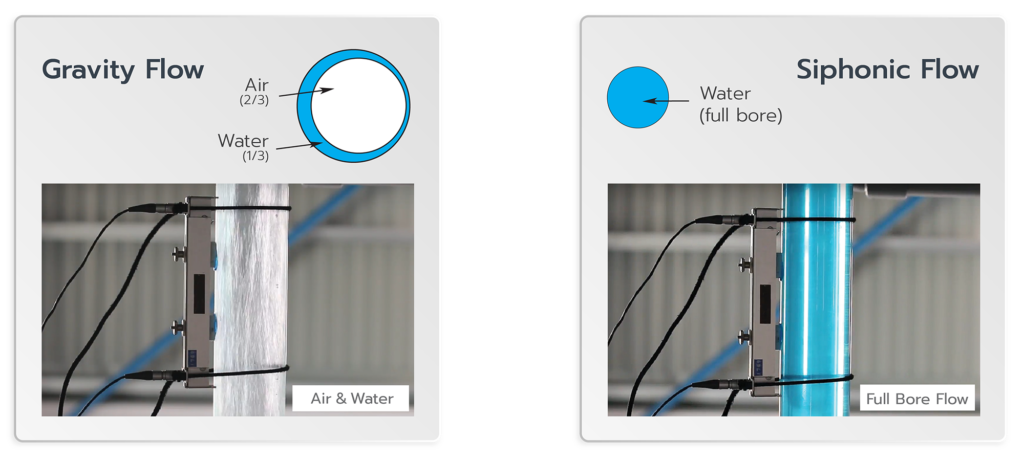- ระบบ Siphonic
- JAS Siphonic mechanism
JAS Siphonic mechanism
The mechanism of JAS Siphonic is to activate a full-bore flow of rainwater drainage. The JAS Siphonic Outlet will prevent air from entering pipework, as opposed to the conventional rainwater drainage system where the air is drawn into the system, resulting in slow water drainage and large pipes being required due to air capacity. The size of JAS Siphonic’s rainwater pipes will be precisely calculated to match with the water volume. In case that the pipes are too small, the system will not drain the water in time. Meanwhile, pipes too large will not create a full-bore flow in the pipes. Pipe size, therefore, must be calculated and adjusted to suit the water volume throughout the route.

During the low intensity of rainfall in the initial stage, the JAS Siphonic will function similarly to a gravity rainwater system, with the pressure in the pipe system equal to atmospheric pressure. When the rain is at higher intensity, the JAS Siphonic outlets will prevent the entry of air into the pipes, promoting the pipe system to has full bore flow and with negative pressure, causing suction in the system and draining water at a high flow rate.
Stages of Siphonic system

Gravity Flow
During low-level rain intensity and low rainwater volume, the water in the pipe system is inadequate to activate the Siphonic system. The flow pattern will function as gravity flow.

Plug Flow
When the rain intensity increases, the volume of rainwater flowing into the pipe will rise. The flow pattern will begin to alter into plug flow due to insufficient water drainage from small-sized pipes, starting the self-cleaning process.

Bubble Flow
The water rapidly fills up the pipe, but the flow pattern still carries the air bubbles inside, driven by atmospheric pressure.

Full Bore Flow
During heavy rain intensity, where the pipes are full of rainwater with no air bubbles, the pressure in the pipe system will become lower than the atmospheric pressure, causing suction and draining water at full capacity.
The water rapidly fills up the pipe, but the flow pattern still carries the air bubbles inside, driven by atmospheric pressure.









